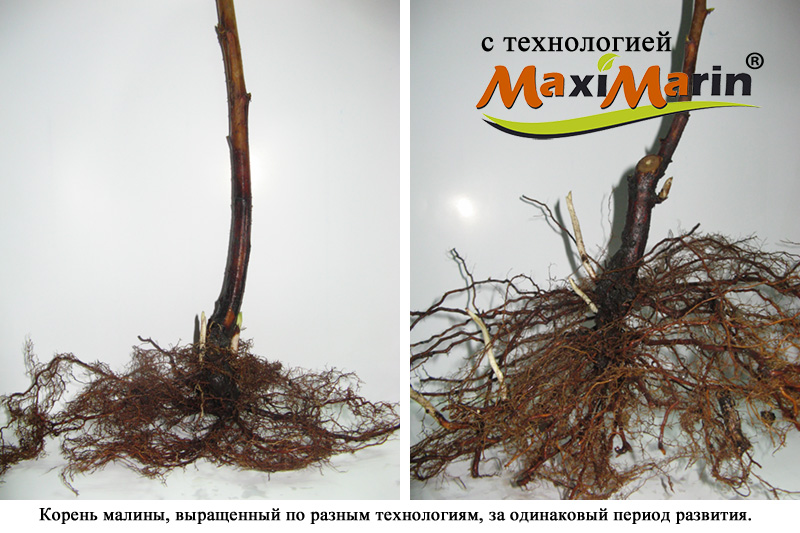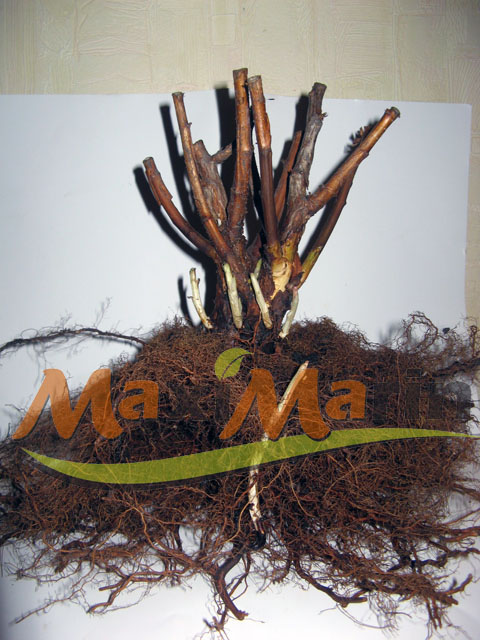The application of unique approaches in growing raspberry.
Last year made us recollect that winter can be cold and fresh as it was in the childhood. When a thermometer showed -10 ° С, we extremely rejoiced as it was supposed to be real warming.
In spring, having rest after difficult farm works, we dreamt about summer, warmth and sun. But with the advent of summer, this gladness faded away almost in a week, because it turned out to be not very joyful when the temperature of air was up to + 45 ° - + 50 ° С.
The summer of 2010 was characterized by 1,5-2 months of relentless heat accompanied by the absence of rains. Though people had the opportunity to hide into shadow, under air-conditioners and cooling fans, our plants were doomed to stay in drought conditions both day and night.
Everyday evening watering was ineffective, a lot of strawberry, raspberry and currants drooped.
Things were much better where drop watering was carried, but in the places we had both drop watering and upper irrigation the plants were in perfect state.
According to our scientists’ opinion, within the period of 5 years we are waiting for the weather conditions of such type – cold winter and extremely hot summer. That’s why it is essential to get out some lessons from this year and to prepare for new conditions as soon and effectively as possible.
The first point is that it is not advisable to rely on a bit of luck. Such attitude will not go! Whether we like it or not, but probably it is the beginning of the fight for survival and we must completely justify our title “homo sapiens”.
Today, the usual plant watering is unproductive! Soil fries to the conditions when almost all water vaporizes, without reaching plant roots. Mulching is one of the effective ways to lower soil temperature. Almost everything may be used as mulch – it is possible to strew saw powder, straw, grass clipping (without seeds), sunflower shells, ling and even old carton.
The soil temperature under a layer of mulch is on 10-15 °С lower than in the sun, in addition, it maintains moisture in a well-marked way.
Shadowing is one more effective way to make plants exist in favorable conditions. Where it is possible, it is advisable to crop corn or sorghum as they provide plants with shadow in the most effective way.
In 2011 we are going to plant new raspberry yard together with sorghum for creating the shadowing effect. We will arrange the rows in such a way for this process to last as long as possible.
We have been using MaxiMarin products while planting strawberry and raspberry for 5 years already. They help us in avoiding all the above mentioned problems. Owing to the application of MaxiMarin we would like to point out a few opportunities we can use:
- to regulate plants moisture level, keeping away from water deficiency;
- to shorten the amount of watering (in such a way we can save water, invaluable time and, finally, our money);
- to gather the most precious natural moisture which is so necessary for our plants (today, it is a well-known fact that pipeline water contains a lot of yellow dirt which is very dangerous for people and plants growth);
- to help plants to distress in the period of drought;
- to increase fruitfulness and taste qualities of berries.
2 years ago I came short of MaxiMarin products simply for 2 rows of raspberry while planting.
As any watering problems hadn’t occurred before, we decided that nothing horrible would happen if these 2 rows would be planted without MaxiMarin products.
The year of 2009 was characterized by good growth and fruit bearing of raspberry, but, in the rows where MaxiMarin products were absent, raspberry bushes compromised on thickness, size and crop productivity.
But the beginning of summer in 2010 could simply be named as at thunderbolt in camp. In the peak of the heat, I was even forced to carry a thermometer into a house to avoid its breakage, we failed to make scheduled watering because of electricity absence.
Next morning it was noticed that namely these 2 rows had lowered leaves. All following attempts of watering, sprinkling irrigation, additional forage gave no results.
The leaves on the above mentioned raspberry bushes were drying out slowly, but steadily.
In a week they turned into “rusks”. I was sick at heart, but at the same time I understood that there was nobody to accuse except ourselves. The unfortunate experience of this summer was on our account.
In April and May we planted new rows of raspberry with the help of downfallen sproutings. Taking into account the painful experience of a previous year, we decided not to risk by planting raspberry without MaxiMarin products. The process of planting was carried in such a way: firstly, we prepared the holes by bringing a few MaxiMarin tablets into each of them, and then sproutings together with soil lumps were carried into the holes. This relocation was almost painless for plants. In a week we nourished soil by the liquid of Viva and Kendal (25ml per 10 l of water). The most difficult time turned out to be in July, when real draught started. Weakened sproutings were faded because of the heat and the sun influence. Unfortunately, some of them died out, but in the percent composition these losses made up not more than 3 %. For somebody it may be pretty much, but such depletion had not taken place before, using new approaches in planting, we experienced it only this year.
Until September the remaining part of sproutings turned into beautiful and quite strong bushes with developed root system and large amount of berries.
All in all, taking into account the experience of this challenging year, we can make such conclusion – if we want to save plants and reach high fruitfulness – it is very necessary to implement new approaches, use tested drug products of high quality, because noticeable effect becomes visible even in allotment gardens, saying nothing of larger land areas.
Larysa Chaban,
Kremenchuk









